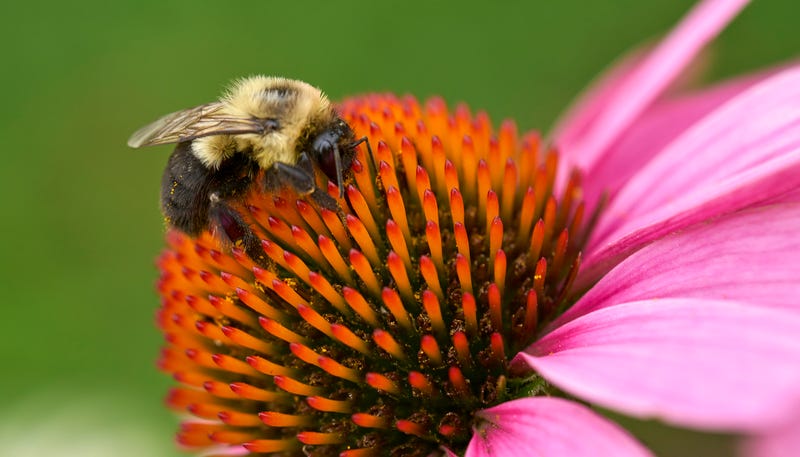
Changes in bumblebee wing symmetry beginning in 1925 may be an indicator of the impact climate change has on the pollinating insects, according to a study published Wednesday in the Journal of Animal Ecology.
Researchers explained that random deviations from the “bilateral symmetry” of bumblebee wings could indicate developmental stressor such as temperature, parasites and pesticides. To understand how stress has impacted four species of bumblebees throughout the previous century, they studied thousands of specimens from five different museums.

Specifically, the researchers investigated: whether baseline symmetry levels varied between species and how the symmetry compared between the first and second half of the century; the extent of change over the century in four bumblebee species (Bombus hortorum, B. lapidarius, B. muscorum and B. pascuorum) and whether this followed a linear or nonlinear trend and which annual climatic conditions correlated with an increase.
Of the four species chosen for the recent study, B. hortorum and B. lapidarius maintained a relatively stable geographic distribution since the 1960s, B. muscorum declined and B. pascuorum expanded its distribution. Each of the species appeared to be similarly impacted regarding wing asymmetry.
Researchers found that relatively warm and wet years were associated with higher fluctuations in wing asymmetry.
“Collectively our findings show that FA [fluctuating asymmetry] in bumblebees increased over the 20th century and under weather conditions that will likely increase in frequency with climate change,” said the study. Furthermore, results “could suggest bumblebees experienced increasing stress as the century progressed and that aspects of climate change could have contributed to this trend.”
Although environmental change over the past century put stress on multiple organisms, the researchers noted that other factors, including agricultural intensification and spread of invasive species, could impact bumblebees.
Bumblebees are “an invaluable group of insect pollinators,” said the study authors. In fact, many of the world’s food crops are dependent on these bees. If they disappeared, half of the 350,000 species of flowering plants would lose around 80% of their seed production.
In the U.K., two bumblebee species went extinct during the 20th century and other species are on conservation priority lists, per the Bumblebee Conservation Trust.
According to the U.S. Department of Agriculture, “there are approximately 50 species of bumble bees that inhabit nearly every terrestrial ecosystem on the continent,” in North America. Another important type of bee is the honey bee.
“One out of every three bites of food in the United States depends on honey bees and other pollinators,” said the department. Honey bees pollinate $15 billion worth of crops each year, including more than 130 fruits and vegetables.”
However, populations of honey bees have declined over the past 50 years. Since 2006, about 30% of beehives collapsed because of disease, parasites, poor nutrition, pesticide exposure and other issues, said the USDA.
“Moving forward, measuring FA [fluctuating asymmetry] in contemporary specimens, and especially relating it to land-use and climate change hotspots, may provide a mechanistic insight into the causes of stress and provide early-warning indicators to inform safeguarding strategies to protect beneficial insects,” said the study.
LISTEN on the Audacy App
Sign up and follow Audacy
Facebook | Twitter | Instagram

